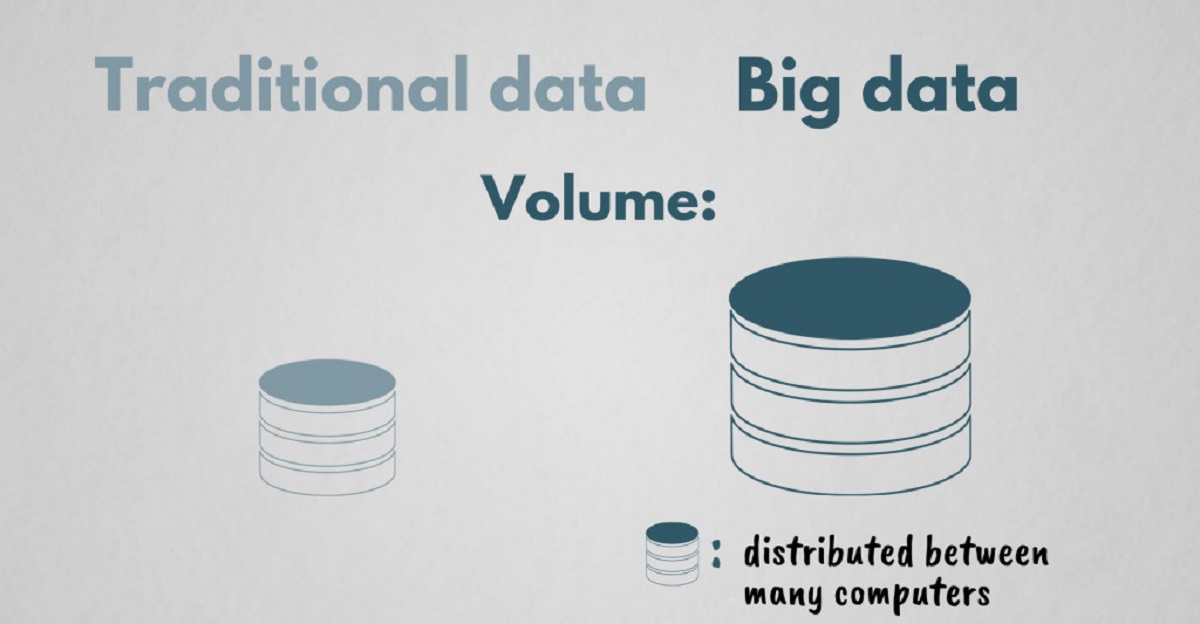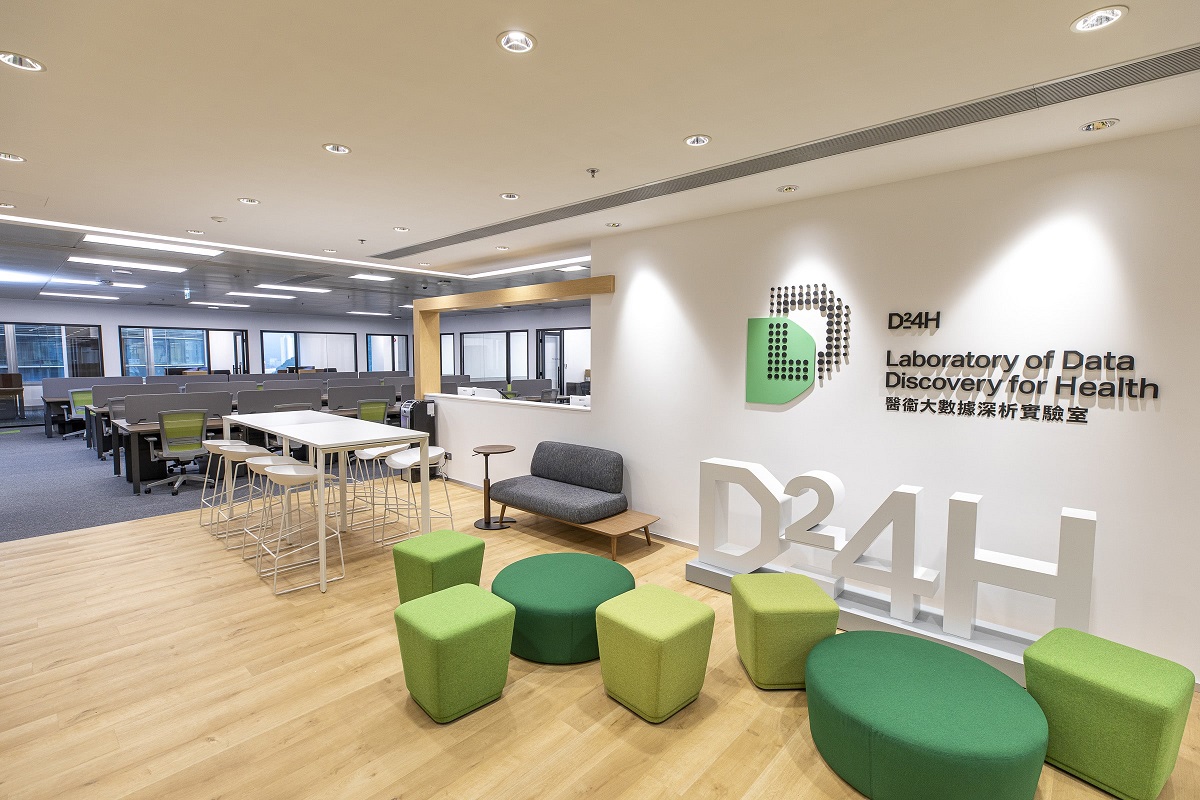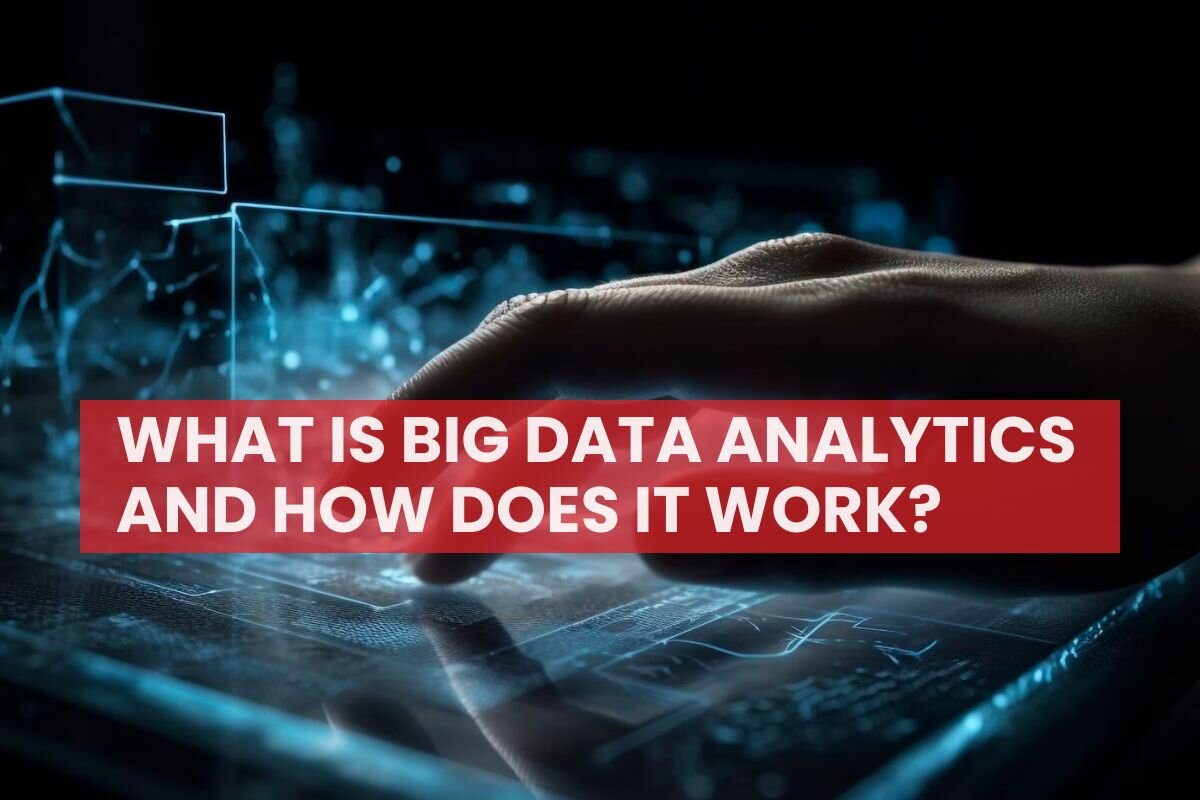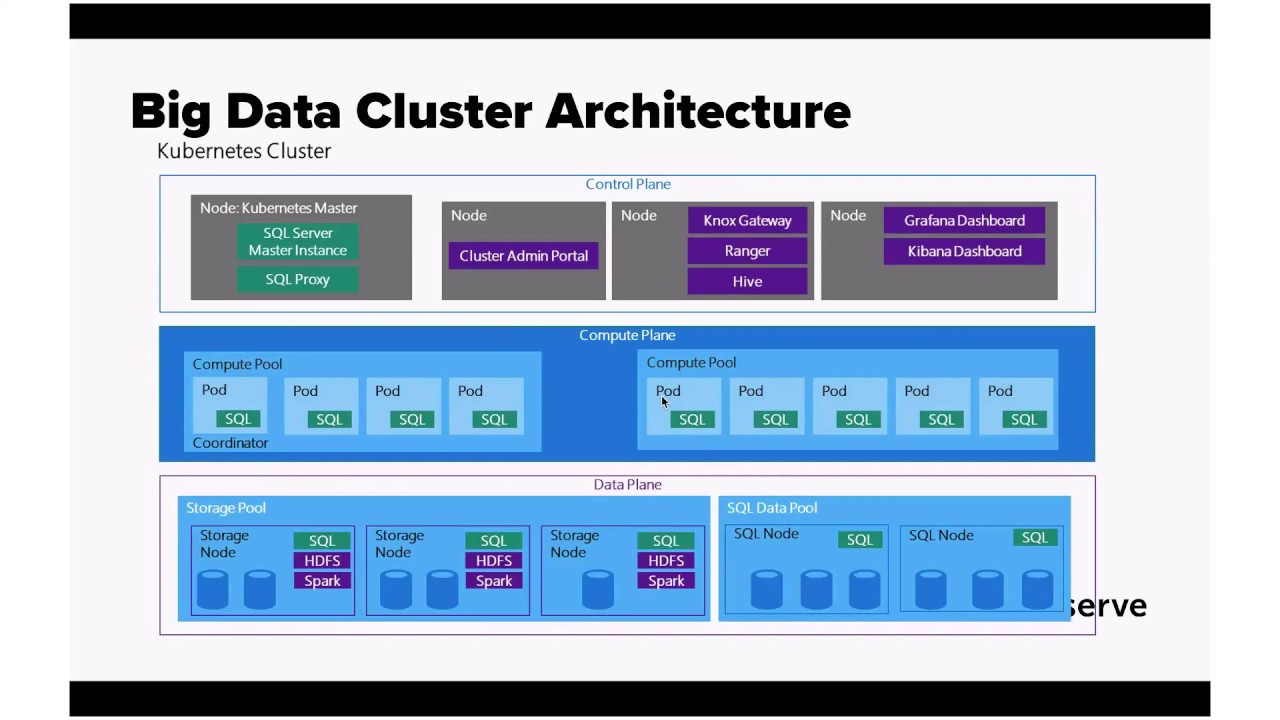Introduction
Big data has become a buzzword in today’s digital age, revolutionizing the way businesses function and transforming various industries. With the rapid advancements in technology and the increasing interconnectedness of our world, the volume of data being generated has skyrocketed. This abundance of data, commonly known as big data, holds immense potential for businesses to gain valuable insights and make informed decisions.
So, what exactly is big data? In simple terms, it refers to the large and complex sets of data that cannot be easily processed or analyzed using traditional methods. This data is characterized by its volume, velocity, and variety. It includes structured data such as databases, as well as unstructured data from social media, videos, images, and more. The sheer amount of data being generated every second is overwhelming, but it also presents unprecedented opportunities for businesses to extract valuable insights that were previously inaccessible.
The importance of big data in today’s business landscape cannot be overstated. With the right tools and analytical techniques, companies can uncover patterns, trends, and correlations within their data, enabling them to make data-driven decisions that drive growth, increase operational efficiency, and optimize customer experiences. From improving decision-making processes to transforming industries, big data is reshaping the way businesses operate in the digital era.
How is big data collected? With the proliferation of connected devices and the internet of things (IoT), an enormous amount of data is being generated from various sources such as social media platforms, sensors, transaction records, and more. Data collection methods range from manual data entry to automated processes through web scraping and data feeds. Additionally, businesses can also collect data through surveys, user interactions, and customer feedback.
The role of data scientists is crucial in harnessing the power of big data. These professionals possess the skills to extract, clean, and analyze massive amounts of data using statistical models, machine learning algorithms, and data visualization tools. They transform raw data into meaningful insights that can guide business strategy and decision making.
This article explores various aspects of big data and its impact on different industries, including its role in improving business decisions, enhancing customer experiences, understanding market trends, and its applications in healthcare, cybersecurity, and education. Additionally, the article also addresses the challenges associated with big data and provides a glimpse of its future implications.
What is Big Data?
Big data refers to the massive amounts of data that are generated at an unprecedented rate from various sources such as social media, IoT devices, online transactions, and more. What sets big data apart is its volume, velocity, and variety. The sheer amount of data being produced on a daily basis is staggering, with estimates suggesting that 2.5 quintillion bytes of data are generated each day.
The velocity of data refers to the speed at which it is generated. In today’s fast-paced digital world, data is being created and shared at an astonishing speed. Real-time data streams from social media platforms, website interactions, and sensor networks contribute to the continuous flow of data that businesses must handle and process in a timely manner.
The variety of data refers to the diverse types and formats in which it is available. Traditionally, data was structured and neatly organized in databases. However, the rise of unstructured data such as images, videos, social media posts, and text documents has added to the complexity of big data. Analyzing and deriving insights from this unstructured data requires advanced techniques and tools.
The value of big data lies in its potential to provide valuable insights and meaningful patterns. By harnessing the power of big data analytics, businesses can uncover hidden correlations, trends, and patterns that can drive informed decision-making and strategic planning. These insights can be used for improving operational efficiency, identifying customer preferences, and optimizing business processes.
Big data also plays a vital role in predictive analytics. By analyzing historical data, businesses can make informed predictions about future trends and market behavior. This predictive capability can help organizations stay ahead of the competition, identify emerging opportunities, and mitigate risks.
In order to effectively manage and analyze big data, organizations rely on a variety of technologies and analytical tools. These include data storage and processing technologies such as Hadoop and Apache Spark, as well as machine learning algorithms and data visualization tools. Additionally, cloud computing has also played a significant role in handling big data by providing scalable and cost-effective infrastructure.
Overall, big data has transformed the way businesses operate and make decisions. The ability to extract insights from vast amounts of data has allowed organizations to gain a competitive edge, improve customer experiences, and drive innovation. The field of big data continues to evolve, with new techniques and technologies being developed to handle the ever-increasing volume, velocity, and variety of data.
The Importance of Big Data
Big data has become increasingly important in today’s digital landscape. The ability to collect, analyze, and derive insights from massive amounts of data provides businesses with numerous benefits and opportunities. Here are some key reasons why big data is important:
1. Informed Decision Making: Big data analytics enables organizations to make data-driven decisions. By analyzing large datasets, businesses can identify patterns, trends, and correlations that may not be apparent through traditional methods. These insights help executives and managers make informed decisions, leading to better outcomes and increased business success.
2. Improved Operational Efficiency: Big data can enhance operational efficiency by optimizing processes, identifying bottlenecks, and reducing costs. By analyzing data related to production, supply chain, and customer behavior, organizations can identify areas for improvement and implement strategies to streamline operations.
3. Personalized Customer Experiences: Big data enables businesses to gain a deeper understanding of their customers. By analyzing customer data, including demographics, preferences, and behavioral patterns, organizations can personalize their products and services to meet individual needs. This personalized approach enhances customer satisfaction and loyalty.
4. Enhanced Marketing and Sales: Big data analytics empowers businesses to better target their marketing efforts and maximize sales opportunities. By analyzing customer data, organizations can identify the most effective marketing channels, craft personalized campaigns, and predict customer buying behavior. This targeted approach leads to higher engagement, conversion rates, and revenue.
5. Identification of Market Trends: Big data allows organizations to stay ahead of market trends and changes. By analyzing data from various sources, including social media, industry reports, and customer feedback, businesses can gain insights into market demand, competitor activities, and emerging trends. This information helps businesses adapt their strategies, innovate, and seize new opportunities.
6. Improved Risk Management: Big data analytics helps organizations identify and mitigate risks. By analyzing historical data, organizations can identify patterns and predict potential risks, enabling them to take proactive measures to minimize the impact. This can include fraud detection, cybersecurity threat identification, and financial risk management.
7. Innovation and Development: Big data provides a valuable resource for innovation and product development. By analyzing customer feedback, market trends, and competitor strategies, organizations can identify gaps in the market and develop innovative products and services that meet the evolving needs of customers.
Overall, the importance of big data lies in its ability to transform businesses by providing valuable insights, optimizing processes, enhancing customer experiences, and driving innovation. Organizations that embrace and leverage the power of big data gain a competitive advantage in today’s data-driven economy.
How is Big Data Collected?
Big data is collected from a wide variety of sources in today’s interconnected world. With the proliferation of digital devices and the internet of things (IoT), there are numerous avenues through which data is generated. Here are some common methods of collecting big data:
- Social Media: Social media platforms such as Facebook, Twitter, Instagram, and LinkedIn generate vast amounts of data. From user profiles to likes, shares, comments, and posts, social media platforms provide valuable insights into consumer behavior, preferences, and sentiments.
- Web Tracking: Websites use tracking technologies, such as cookies, to collect data on user interactions. This includes information on pages visited, time spent on each page, click-through rates, and more. Web tracking data helps organizations understand user behavior, optimize website performance, and personalize user experiences.
- Sensors and IoT Devices: The proliferation of sensors and IoT devices has led to the generation of massive amounts of data. These devices collect data on various parameters such as temperature, humidity, motion, and location. This data is used in applications ranging from smart homes and wearables to industrial monitoring and transportation logistics.
- Transaction Records: Every transaction made online or offline generates data. This includes data from purchases, invoices, sales records, and payment information. Analyzing transaction data provides insights into consumer spending habits, purchasing patterns, and product performance.
- Customer Interactions: Data is collected from customer interactions through various channels such as call centers, emails, chatbots, and customer relationship management (CRM) systems. This data provides insights into customer preferences, sentiment analysis, and customer satisfaction levels.
- Surveys and Feedback: Organizations often collect data through surveys, questionnaires, and feedback forms. This data provides direct insights into customer opinions, preferences, and suggestions. Surveys can be conducted offline, online, or through mobile apps.
- Publicly Available Data: Data from public sources such as government databases, open data initiatives, and research publications can be used to augment big data analysis. This includes demographic data, economic indicators, weather data, and more.
Collecting big data involves both manual and automated methods. While some data is collected through human input and interaction, much of the data collection process has been automated through the use of web scraping, data feeds, and APIs (Application Programming Interfaces).
It is important to note that while the collection and use of big data provide significant benefits, organizations must also respect privacy laws and protect sensitive information. Data collection practices should comply with relevant regulations and ethical guidelines to ensure transparency and data privacy.
With the ever-increasing volume and variety of data being generated, organizations must ensure they have the proper infrastructure, storage, and analytical capabilities to handle and extract insights from big data. This includes employing data management tools, cloud computing services, and advanced analytics techniques to make the most of the collected data.
The Role of Data Scientists
In the era of big data, data scientists play a critical role in extracting meaningful insights and driving business value. They are highly skilled professionals who possess a unique combination of technical expertise, statistical knowledge, and business acumen. Here are some key aspects of the role of data scientists:
Data Collection and Cleaning: Data scientists are responsible for gathering and preparing the data for analysis. They work closely with various teams to identify the relevant data sources, ensuring data quality and integrity. This involves cleaning, organizing, and structuring the data, as well as handling missing values and outliers.
Data Analysis and Modeling: Data scientists employ advanced statistical and machine learning techniques to analyze the data and identify patterns, trends, and correlations. They develop models and algorithms to extract insights and make predictions. This includes tasks such as clustering, classification, regression, and recommendation systems.
Exploratory Data Analysis: Data scientists conduct exploratory data analysis to gain a deep understanding of the data. They use various statistical methods, data visualization tools, and exploratory techniques to uncover hidden patterns and relationships within the data. This helps in formulating hypotheses and guiding further analysis.
Machine Learning and Artificial Intelligence: Data scientists use machine learning algorithms and AI techniques to develop predictive models and automate decision-making processes. They train models on large datasets to identify patterns and make accurate predictions or classifications. They also work on natural language processing, computer vision, and deep learning algorithms.
Data Visualization and Communication: Data scientists play a crucial role in presenting complex data in a visually appealing and understandable way. They use data visualization tools and techniques to create meaningful visual representations such as charts, graphs, and dashboards. They communicate their findings and insights to stakeholders, enabling them to make data-driven decisions.
Domain Knowledge and Business Acumen: Data scientists possess a deep understanding of the industry and domain in which they operate. They work closely with business stakeholders to frame relevant problems and provide actionable insights. They combine their technical skills with business acumen to guide decision-making and drive innovation.
Experimentation and A/B Testing: Data scientists design and conduct experiments to test hypotheses and validate their models. They use A/B testing and other techniques to measure the impact of changes or interventions, helping businesses optimize their strategies and improve outcomes.
Ethics and Privacy: Data scientists ensure that data collection and analysis comply with privacy regulations and ethical guidelines. They handle sensitive and confidential information responsibly, maintaining the privacy and security of data throughout the entire data lifecycle.
The role of data scientists continues to evolve as organizations recognize the value of big data and invest in analytics capabilities. They work closely with stakeholders across different functions to unlock the potential of data and drive innovation. Data scientists are vital in enabling organizations to make data-driven decision-making a core part of their strategy for success.
Improving Business Decisions with Big Data
Big data has revolutionized the way businesses make decisions. By analyzing vast amounts of data, organizations can gain insights that lead to more informed and accurate decision-making processes. Here are some key ways in which big data improves business decisions:
Data-driven Insights: Big data analytics allows businesses to extract valuable insights from complex and diverse datasets. With the right tools and techniques, organizations can identify patterns, trends, and correlations that were previously hidden. These insights provide a solid foundation for making strategic and operational decisions.
Real-time Decision Making: Traditional decision-making processes were often slow and relied on historical data. Big data enables real-time decision-making, as organizations can analyze data as it is generated to respond quickly to changing market conditions. Real-time insights allow businesses to seize opportunities, mitigate risks, and stay ahead of the competition.
Improved Strategic Planning: Big data enables organizations to make more informed decisions when formulating their long-term strategies. By analyzing market trends, customer behavior, and competitor activities, businesses can identify emerging opportunities and anticipate future challenges. These insights help organizations develop robust strategic plans that align with market demands.
Enhanced Customer Understanding: Big data analytics provides businesses with a comprehensive understanding of their customers. By analyzing customer data, organizations can gain insights into preferences, purchase behavior, and sentiment. This helps in tailoring products, services, and marketing campaigns to meet individual customer needs. Personalized experiences lead to increased customer satisfaction and loyalty.
Optimized Operations: Big data analytics enables businesses to optimize their operations and improve efficiency. By analyzing operational data, organizations can identify bottlenecks, streamline processes, and reduce costs. This leads to improved productivity and better resource allocation.
Risk Assessment and Mitigation: Big data analytics helps businesses identify and mitigate risks. By analyzing historical data and utilizing predictive analytics, organizations can assess potential risks and take proactive measures to minimize their impact. This includes identifying fraud patterns, predicting cybersecurity threats, and managing financial risks.
Marketing Effectiveness: Big data provides valuable insights for marketing campaigns. By analyzing customer behavior, preferences, and demographics, businesses can target their marketing efforts more effectively. This includes personalized messaging, targeted advertising, and optimized marketing channel selection. Improved marketing effectiveness leads to higher conversion rates and increased return on investment.
Supply Chain Optimization: Big data analytics plays a significant role in optimizing supply chain operations. By analyzing data related to inventory levels, demand fluctuations, and supplier performance, organizations can optimize their supply chain network, reduce costs, and ensure timely delivery of products and services.
Competitive Advantage: Organizations that leverage big data effectively gain a competitive advantage. By using data analytics to drive decision-making processes, businesses can identify industry trends, customer preferences, and emerging market opportunities. This helps in staying ahead of the competition, fostering innovation, and driving business growth.
Overall, big data has transformed the way businesses make decisions. By harnessing the power of data analytics, organizations gain valuable insights that drive strategic planning, optimize operations, enhance customer experiences, and maintain a competitive edge in the market.
Enhancing Customer Experience with Big Data
Big data plays a crucial role in enhancing customer experiences by enabling businesses to gain deeper insights into customer preferences, behaviors, and needs. By harnessing the power of big data analytics, organizations can deliver personalized, targeted, and contextual experiences that leave a lasting impact. Here are key ways in which big data enhances customer experience:
Personalization: Big data allows businesses to understand customers on an individual level. By analyzing customer data, including purchase history, browsing behavior, and demographic information, organizations can create personalized experiences tailored to each customer’s preferences. This can include personalized product recommendations, customized offers, and targeted marketing communications.
360-Degree Customer View: Big data enables organizations to consolidate customer data from various touchpoints, such as website interactions, social media activities, and customer support interactions. By integrating these data sources, businesses can develop a 360-degree view of the customer journey. This holistic view helps organizations understand the customer’s context and deliver seamless and consistent experiences across all touchpoints.
Predictive Analytics: Big data analytics allows businesses to predict customer behavior and anticipate their needs. By analyzing historical data and applying predictive algorithms, organizations can identify patterns and trends that help in understanding what customers are likely to do in the future. This enables businesses to proactively address customer needs, offer relevant suggestions, and provide a higher level of service.
Real-time Personalization: Big data enables real-time personalization by analyzing customer data in the moment. As customers interact with websites, mobile apps, or other touchpoints, big data analytics can instantly process and respond to their actions. This allows businesses to deliver personalized content, recommendations, and offers in real-time, creating a more engaging and relevant experience for the customer.
Improved Customer Segmentation: Big data analytics helps businesses segment customers based on their behaviors, preferences, and characteristics. By analyzing large datasets, organizations can identify distinct customer segments and target them with customized offerings. This leads to more effective marketing campaigns and tailored experiences that resonate with specific customer groups.
Customer Sentiment Analysis: Big data analytics can analyze customer feedback, reviews, and social media sentiment to understand customer sentiment and perception. This valuable insight allows businesses to identify areas of improvement, address customer concerns promptly, and monitor brand reputation. By leveraging this analysis, organizations can take proactive steps to enhance customer satisfaction and loyalty.
Omnichannel Experience: Big data integration enables businesses to deliver a seamless and consistent experience across multiple channels and touchpoints. By understanding customer preferences and behaviors across various channels, organizations can ensure a cohesive experience that allows customers to switch between channels without losing continuity. This includes consistent messaging, personalized recommendations, and synchronized interactions.
Customer Retention and Loyalty: Big data analytics helps organizations identify factors that impact customer retention and loyalty. By analyzing customer behavior, purchase history, and satisfaction metrics, businesses can identify customers at risk of churn and implement targeted retention strategies. This can include personalized offers, loyalty programs, and proactive customer support.
Continuous Improvement: Big data analytics provides businesses with valuable insights for continuous improvement. By analyzing customer data, organizations can identify pain points, areas of friction, and opportunities for enhancement. This customer-centric approach helps businesses refine their products, services, and processes to better meet customer expectations and deliver an exceptional experience.
Big data has the potential to radically transform the way businesses interact with their customers. By leveraging the power of data analytics, organizations can deliver personalized and seamless experiences that build trust, foster loyalty, and ultimately drive business growth.
Understanding Market Trends with Big Data
Big data has revolutionized the way businesses understand and analyze market trends. By analyzing massive volumes of data collected from diverse sources, organizations can gain valuable insights into consumer behavior, market dynamics, and emerging trends. Here are key ways in which big data helps in understanding market trends:
Consumer Insights: Big data analytics allows businesses to gain a deep understanding of consumer behavior. By analyzing data gathered from various sources, including social media, online platforms, and customer interactions, organizations can identify patterns, preferences, and buying behavior. This insight helps businesses understand what drives consumer decisions and tailor their marketing strategies accordingly.
Real-time Data Analysis: With big data, organizations can analyze data in real-time to monitor market trends as they unfold. By accessing real-time data streams, such as social media feeds, online reviews, and news articles, businesses can stay updated on the latest consumer sentiment, industry developments, and competitor activities. This enables them to adapt quickly, respond to market shifts, and make timely strategic decisions.
Competitor Analysis: Big data analytics enables organizations to gain insights into competitor activities and strategies. By analyzing publicly available data, such as website content, social media interactions, and customer reviews, organizations can understand their competitors’ market positioning, product offerings, and pricing strategies. This allows businesses to identify areas of competitive advantage and make informed decisions to differentiate themselves.
Market Segmentation: Big data analytics helps businesses identify and target specific market segments. By analyzing customer data, organizations can group customers based on demographic, behavioral, or psychographic characteristics. This segmentation allows businesses to customize their marketing campaigns, product offerings, and messaging to better meet the needs and preferences of different customer groups.
Demand Forecasting: Big data plays a crucial role in demand forecasting. By analyzing historical sales data, market trends, and external factors, organizations can predict future demand for their products and services. This insight helps businesses optimize inventory levels, production planning, and supply chain management, reducing costs and ensuring efficient operations.
Product Development: Big data provides valuable insights for product development. By analyzing customer feedback, reviews, and market trends, organizations can identify gaps in the market, gauge customer preferences, and anticipate emerging needs. This information helps businesses develop innovative products and stay ahead of market trends, ensuring they meet evolving customer expectations.
Geolocation Analysis: Big data analytics, when combined with location data, provides valuable insights into regional market trends and consumer behavior. By analyzing location-based data, businesses can identify geographic patterns, target specific regions or local markets, and customize their marketing strategies to cater to unique regional preferences and needs.
Pricing Optimization: Big data analytics helps organizations optimize pricing strategies. By analyzing market data, competitor pricing, and customer behavior, businesses can determine the optimal price points for their products or services. This ensures competitiveness in the market while maximizing revenue and profitability.
Predictive Market Analysis: Big data enables organizations to perform predictive market analysis by utilizing historical data, machine learning algorithms, and advanced analytical techniques. By analyzing patterns, correlations, and consumer behavior, businesses can make informed predictions about future market trends, customer preferences, and demand fluctuations. This helps in strategic planning, risk mitigation, and identifying new growth opportunities.
Identifying New Market Opportunities: Big data analytics allows businesses to discover new market opportunities. By analyzing emerging trends, consumer demands, and industry shifts, organizations can identify niche markets, untapped customer segments, and emerging product categories. This enables businesses to capitalize on these opportunities and gain a competitive advantage.
Big data and analytics have opened up new possibilities for understanding market trends and consumer behavior. By leveraging these insights, organizations can make informed decisions, develop effective marketing strategies, stay ahead of the competition, and drive business growth in an ever-evolving marketplace.
Big Data and Healthcare
The healthcare industry is experiencing a major transformation due to the integration of big data and analytics. The vast amount of information generated within healthcare systems, combined with advances in technology, has created unprecedented opportunities for improving patient care, enhancing operational efficiency, and accelerating medical research. Here are key ways in which big data is revolutionizing healthcare:
Personalized Medicine: Big data analytics enables the development of personalized medicine approaches. By analyzing large datasets, including genomic data, electronic health records (EHRs), and real-time patient monitoring data, healthcare providers can customize treatment plans based on an individual patient’s characteristics, genetic makeup, and medical history. This precision medicine approach improves patient outcomes and minimizes adverse effects.
Early Disease Detection and Diagnosis: Big data analytics can identify patterns and detect early warning signs of diseases. By analyzing vast amounts of patient data, including lab results, imaging records, and clinical notes, healthcare providers can develop predictive models that help in early disease detection and timely interventions. This leads to better patient outcomes and reduced healthcare costs.
Healthcare Management and Resource Allocation: Big data analytics helps in optimizing healthcare management and resource allocation. By analyzing clinical data, operational data, and patient flow information, healthcare organizations can identify inefficiencies, streamline workflows, and allocate resources where they are most needed. This improves operational efficiency, reduces wait times, and enhances patient satisfaction.
Public Health Monitoring: Big data plays a crucial role in monitoring public health and disease outbreaks. By integrating data from multiple sources, such as social media, environmental sensors, and hospital records, healthcare organizations can identify disease trends, track the spread of infectious diseases, and implement timely public health interventions. This enhances disease surveillance and enables proactive public health management.
Drug Discovery and Development: Big data analytics is transforming the process of drug discovery and development. By analyzing massive amounts of biological and clinical data, including genomics, proteomics, and drug response data, researchers can identify new drug targets, personalize drug therapies, and accelerate the development of novel treatments. This leads to more effective and targeted therapies for various diseases.
Remote Patient Monitoring: Big data analytics enables remote patient monitoring, especially for managing chronic diseases. By analyzing data from wearable devices, sensors, and mobile health apps, healthcare providers can monitor patients remotely, detect early signs of deterioration, and intervene before serious complications occur. This not only improves patient outcomes but also reduces the need for hospitalizations.
Healthcare Fraud Detection: Big data analytics helps in detecting healthcare fraud and abuse. By analyzing claims data, billing patterns, and provider behavior, healthcare organizations can identify anomalies and patterns indicative of fraudulent activities. This helps in preventing financial losses, improving regulatory compliance, and ensuring that resources are allocated effectively for genuine patient care.
Population Health Management: Big data analytics facilitates population health management by analyzing data on a large scale. By integrating data sources such as EHRs, claims data, and socio-economic factors, healthcare organizations can assess the health status of specific populations, identify at-risk individuals, and design targeted interventions to prevent disease and promote wellness at a population level.
Medical Research and Clinical Trials: Big data has significantly impacted medical research and clinical trials. By aggregating and analyzing data from multiple sources, including clinical trials, research studies, and patient databases, researchers can gain insights into disease progression, treatment efficacy, and patient responses. This accelerates the discovery of new therapies and facilitates evidence-based medicine.
The integration of big data and analytics in healthcare holds immense potential for improving patient care, enhancing outcomes, and advancing medical research. By leveraging the power of data, healthcare organizations are well-positioned to transform the delivery of healthcare and drive better health outcomes for individuals and populations.
Big Data and Cybersecurity
As cyber threats continue to evolve, the importance of big data in cybersecurity has grown exponentially. The sheer volume and complexity of data generated within organizations provide valuable inputs for detecting and mitigating cyber risks. By leveraging big data analytics, organizations can enhance their cybersecurity strategies and better protect their critical assets. Here are key ways in which big data is revolutionizing cybersecurity:
Threat Detection and Prevention: Big data analytics enables organizations to detect and prevent cyber threats in real-time. By analyzing vast amounts of data from logs, network traffic, user behavior, and security events, organizations can uncover patterns, anomalies, and potential threats. This proactive threat detection allows for early response and mitigation, reducing the likelihood of successful cyber attacks.
Behavioral Analytics: Big data analytics helps in analyzing user behavior to identify potential insider threats and unusual activities. By examining historical data and patterns, organizations can develop behavioral profiles of users, systems, and networks. This allows for the identification of abnormal behaviors that may indicate malicious intent or compromise, enhancing overall threat detection capabilities.
Security Intelligence: Big data analytics provides organizations with actionable security intelligence. By collecting and analyzing data from various sources both internal and external, organizations can gain valuable insights into the ever-evolving threat landscape. This includes information about emerging vulnerabilities, known attack vectors, and the tactics, techniques, and procedures (TTPs) employed by adversaries.
Effective Incident Response: Big data analytics enhances incident response capabilities. By aggregating and analyzing data from security logs, intrusion detection systems, and other sources, organizations can quickly identify the scope and impact of a security incident. This enables rapid containment, investigation, and remediation actions, minimizing the impact of cyber attacks.
Security Analytics: Big data analytics plays a vital role in security analytics by enabling organizations to analyze large volumes of security data in a cost-effective manner. This includes processing and analyzing data from a wide range of sources, such as logs, threat intelligence feeds, and security devices. The insights gained from security analytics help organizations identify security weaknesses, prioritize remediation efforts, and fine-tune their overall security posture.
Threat Intelligence: Big data analytics enhances the capabilities of threat intelligence platforms. By analyzing large-scale data, organizations can identify emerging threat actors, trends, and attack patterns. Big data allows for the correlation of various threat intelligence feeds, enabling the identification of relevant threats specific to an organization’s environment. This intelligence can then be used to proactively defend against future attacks.
Machine Learning and AI-powered Security: Big data analytics enables the use of machine learning and artificial intelligence (AI) algorithms in cybersecurity. By leveraging big data, organizations can train machine learning models to detect and classify new and unknown threats. These models continuously learn from new data and adapt to evolving threats, improving the accuracy and effectiveness of security controls.
Forensics and Investigation: Big data analytics aids in forensic analysis and investigation of security incidents. By analyzing large volumes of data, organizations can reconstruct timelines, identify the root cause of incidents, and gather evidence necessary for legal or disciplinary actions. Big data analytics significantly speeds up the investigation process, enabling a timely response and resolution of security incidents.
Proactive Risk Management: Big data analytics enables organizations to proactively manage cyber risks. By analyzing data related to vulnerabilities, patch levels, configuration settings, and threat intelligence, organizations can identify and prioritize risks. This allows for proactive risk mitigation, focusing resources on critical areas to minimize the likelihood and impact of potential cyber incidents.
The integration of big data analytics into cybersecurity practices allows organizations to enhance their defenses and stay ahead of emerging cyber threats. By effectively leveraging the power of big data, organizations can achieve improved threat detection, timely incident response, and proactive risk management in an increasingly complex cybersecurity landscape.
Big Data and Education
The integration of big data in education has the potential to transform the way we teach and learn. By harnessing the power of data analytics, educational institutions can gain valuable insights into student performance, personalize learning experiences, and improve educational outcomes. Here are key ways in which big data is revolutionizing education:
Personalized Learning: Big data analytics enables personalized learning experiences tailored to individual student needs. By analyzing data on student performance, learning styles, and preferences, educational institutions can create customized learning pathways. This adaptive approach allows students to learn at their own pace and in a way that suits their individual strengths and weaknesses.
Early Intervention: Big data analytics helps identify students who may be at risk of falling behind or encountering difficulties in their studies. By analyzing data on attendance, grades, and engagement, educational institutions can pinpoint early warning signs and intervene before students face significant challenges. This allows for timely support and intervention to ensure student success.
Curriculum Enhancement: Big data analytics provides insights into the effectiveness of curriculum and instructional practices. By analyzing student performance data, educational institutions can identify areas where the curriculum may need improvement or where instructional strategies may require adjustment. This enables targeted curriculum enhancements to better address student needs and improve learning outcomes.
Predictive Analytics: Big data analytics in education includes the use of predictive analytics to forecast student performance and outcomes. By incorporating historical data, student characteristics, and learning patterns, educational institutions can make predictions about future student achievements. This assists in creating proactive strategies to support struggling students and identify high-potential individuals.
Learning Analytics: Big data analytics helps gather insights on learning patterns and trends. By analyzing data from learning management systems, online platforms, and educational resources, institutions can gain a deep understanding of how students engage with content, their study habits, and the effectiveness of educational resources. This data-driven understanding informs decisions on instructional design and resource allocation.
Data-Driven Instruction: Big data analytics supports data-driven decision-making in instruction. Teachers can leverage data on student performance, engagement, and assessment outcomes to inform their instructional strategies. This allows for targeted interventions, differentiated instruction, and support mechanisms that meet the needs of diverse learners.
Evidence-Based Practices: Big data analytics promotes evidence-based practices in education. By analyzing data on the effectiveness of different teaching and assessment strategies, educators can make data-informed decisions on educational practices and policy. This enhances instructional quality and promotes continuous improvement.
Efficient Resource Allocation: Big data analytics assists educational institutions in resource allocation. By analyzing data on student enrollment, class sizes, and program demand, institutions can optimize resource allocation. This includes staffing decisions, budgeting, and determining the distribution of educational materials and facilities to ensure efficient utilization of resources.
Educational Research: Big data enables educational research on a large scale. By aggregating and analyzing data from multiple educational settings and institutions, researchers can gain insights into educational effectiveness, student learning processes, and factors influencing educational outcomes. This research informs policy decisions and contributes to the advancement of educational practices.
Continuous Improvement: Big data analytics facilitates a culture of continuous improvement in education. By regularly analyzing data on student performance, educational institutions can identify areas for improvement, set performance benchmarks, and track progress over time. This data-driven approach allows for ongoing assessment and refinement of educational practices.
The integration of big data analytics in education holds tremendous potential for optimizing learning experiences, improving educational outcomes, and enhancing the overall educational landscape. By leveraging the power of data, educational institutions can advance towards personalized, evidence-based, and effective educational practices.
Challenges of Big Data
While big data offers numerous opportunities, it also comes with certain challenges that organizations must navigate to fully unlock its potential. Here are some key challenges associated with big data:
Data Quality: Big data often contains diverse and unstructured data from various sources. Ensuring data quality and accuracy can be a significant challenge. Data may have missing values, inconsistencies, or errors that can impact the reliability of analysis and decision-making. Organizations must invest in data quality management processes and tools to cleanse, validate, and standardize the data.
Data Privacy and Security: The abundance of data increases concerns about privacy and security. With large volumes of sensitive customer and organizational data being collected and stored, the risk of data breaches and unauthorized access is heightened. Organizations must implement robust cybersecurity measures, encryption protocols, access controls, and privacy policies to protect data and comply with relevant regulations.
Data Integration: Big data is often generated across various systems, platforms, and sources. Integrating data from disparate sources can be complex and time-consuming. Organizations must invest in data integration tools and techniques to combine data from different sources, ensuring consistency and usability. This helps in creating a unified view of the data for analysis and decision-making.
Data Governance: With the increasing volume and variety of data, establishing data governance practices becomes critical. Organizations must define data ownership, data stewardship, and data governance policies to ensure data is managed responsibly. This includes maintaining data quality, defining data usage policies, and adhering to data privacy regulations. Establishing a strong data governance framework helps ensure the ethical and responsible use of data.
Infrastructure and Scalability: Big data requires robust infrastructure and scalability to handle large volumes of data and processing demands. Organizations must invest in powerful servers, storage systems, and distributed computing technologies to store, process, and analyze massive datasets. Scaling infrastructure to accommodate the growing volume of data can be a major challenge for organizations with limited resources.
Skills and Talent: The field of big data requires specialized skills and expertise. Organizations may struggle to find and retain professionals with knowledge in data analytics, data science, statistical modeling, and programming. Additionally, the rapid evolution of big data technologies and methodologies requires continuous upskilling and training of staff to keep up with the advancements in the field.
Costs and ROI: Implementing big data initiatives can be costly. The infrastructure, licensing fees, skilled talent, and ongoing maintenance and support all contribute to the overall cost. Organizations must carefully assess the cost-benefit ratio and ensure that the potential return on investment outweighs the expenses associated with big data projects.
Ethical Considerations: Big data raises ethical considerations around privacy, consent, and bias. Organizations need to be mindful of the ethical implications of using data, especially when dealing with personal information or making automated decisions based on algorithms. Transparency and ethical practices should be at the forefront to ensure the responsible and unbiased use of data.
Regulatory and Legal Compliance: The collection and use of big data must comply with relevant laws and regulations. Organizations must navigate complex regulatory frameworks, such as data protection laws and industry-specific regulations, to ensure compliance in data handling, storage, and processing. Failing to adhere to legal requirements can lead to reputational damage and legal consequences.
Cultural and Organizational Change: Embracing big data often requires a cultural shift within organizations. Encouraging data-driven decision-making, promoting collaboration, and fostering a data-centric mindset can be challenging. Organizations need to invest in change management initiatives to ensure the successful adoption and integration of big data into their organizational culture.
Despite these challenges, organizations that effectively address them can harness the power of big data to gain valuable insights, drive informed decision-making, and stay competitive in today’s data-driven world.
Future Implications of Big Data
The future implications of big data are vast and hold tremendous potential to shape various aspects of society, economy, and innovation. As technology advances and data continues to proliferate, here are key areas where big data is expected to drive significant changes:
Artificial Intelligence and Machine Learning: Big data is fueling the growth of artificial intelligence (AI) and machine learning (ML) capabilities. As organizations gather more data, AI and ML algorithms become more effective in extracting insights and making accurate predictions. The combination of big data and AI/ML is expected to transform industries such as healthcare, finance, manufacturing, and transportation, by enabling automation, personalized services, and improved decision-making.
Internet of Things (IoT): The Internet of Things (IoT) is generating massive amounts of data from connected devices. The integration of big data analytics with IoT allows for real-time analysis and decision-making at the edge. This has implications for industries such as smart cities, agriculture, transportation, and healthcare, where IoT devices are deployed at scale. The ability to analyze and act upon near-real-time data can lead to enhanced efficiency, sustainability, and improved quality of life.
Data Governance and Privacy: With the increasing focus on data privacy and regulatory compliance, big data governance practices are evolving. Organizations must navigate complex legal and ethical frameworks to ensure responsible data handling, transparency, and consent. The future will see the development of improved data governance frameworks, privacy-enhancing technologies, and mechanisms for individuals to have greater control over their data.
Data Security and Cybersecurity: As the amount of data grows, the need for robust data security and cybersecurity measures intensifies. Future implications of big data will involve advancements in encryption techniques, anomaly detection algorithms, and behavior analytics to detect and prevent cyber threats. Organizations will also need to invest in secure data storage, authentication mechanisms, and secure data sharing protocols to protect sensitive information.
Data-Driven Decision-Making: The era of big data brings new opportunities for data-driven decision-making across various sectors. Organizations will increasingly rely on data analytics, visualization tools, and predictive modeling to optimize operations, anticipate market trends, and drive innovation. Decision-making processes will become more proactive and efficient, enabling organizations to adapt to changing environments and make more informed choices.
Ethics and Bias in AI: The ethical implications of big data and AI will become more pronounced in the future. The responsible and unbiased use of data will be paramount as AI algorithms play a larger role in decision-making processes. Addressing issues such as algorithmic bias, transparency, fairness, and accountability will be essential to ensure ethical AI deployment and prevent unintended consequences.
Data Skills and Talent: To fully leverage the potential of big data, organizations will continue to invest in data skills and talent. The demand for professionals with expertise in data science, machine learning, and data analytics will grow. Future implications of big data will involve the development of educational programs, training initiatives, and collaborations between academia and industry to bridge the skill gap and foster a data-literate workforce.
Data Collaboration and Partnerships: The future of big data will involve increased collaboration and partnerships between organizations to leverage data resources more effectively. Public-private partnerships, data sharing initiatives, and open data platforms will facilitate data collaboration, enabling organizations to gain deeper insights, address complex challenges, and drive innovation collectively.
Data Privacy and Empowerment: The future will likely see individuals gaining more control over their personal data. Advances in privacy-enhancing technologies, decentralized identity management systems, and blockchain-based solutions may empower individuals to manage and share their data while maintaining control over its usage. Data privacy regulations may evolve to ensure greater protection and individual rights in the digital age.
The future implications of big data are vast and continue to evolve. As organizations and societies harness the power of big data, the fields of technology, business, and society will be reshaped, enabling more informed decision-making, greater innovation, and enhanced experiences.
Conclusion
Big data is revolutionizing the way we live, work, and make decisions in the digital age. With the tremendous amounts of data being generated every second, organizations have access to valuable insights that can drive innovation, enhance customer experiences, and improve outcomes across various industries. The implications of big data are vast, transforming the way businesses operate, healthcare is delivered, education is tailored, and cybersecurity is managed.
However, harnessing the power of big data comes with its own set of challenges. Organizations must address data quality issues, ensure data privacy and security, invest in infrastructure and talent, and navigate complex regulatory landscapes. Ethical considerations also play a crucial role, as responsible data governance and avoiding biases become paramount.
Looking to the future, big data will continue to shape our society, economy, and technology. The integration of big data with emerging technologies such as AI, IoT, and blockchain will unlock new possibilities and opportunities for innovation. Data privacy, security, and governance will evolve alongside advances in data analytics techniques and privacy-enhancing technologies. The need for data skills and talent will grow, and collaboration between organizations will become essential in leveraging data resources effectively.
As big data continues to evolve, it is imperative for organizations, governments, and individuals to embrace its potential while addressing the associated challenges. By doing so, we can collectively harness the power of big data to drive positive change, make informed decisions, and create a better future for everyone.

























